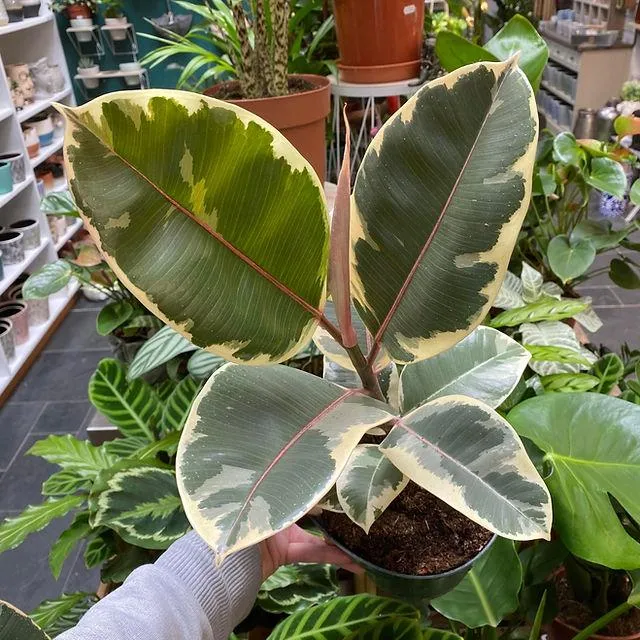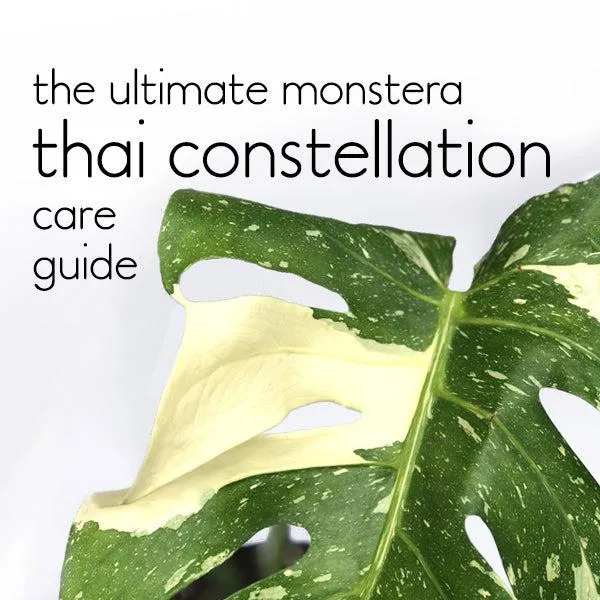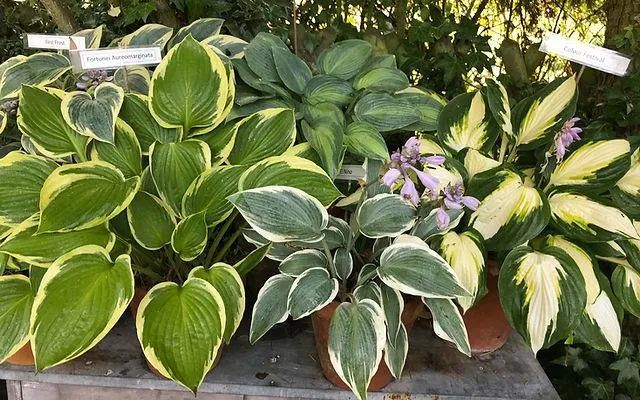Everything You Need to Know About Variegated Plants
If you’ve searched for “variegated plants,” you’re probably curious about these unique-looking houseplants. Variegation is when a plant has more than one color in its leaves, usually green intermingled with white, yellow or pink. In this article, I’ll cover all the basics of variegated plants and answer any questions you may have.
What Causes Variegation?
Variegation occurs due to a genetic mutation that causes parts of the leaves to not produce chlorophyll. Without chlorophyll to photosynthesize, those parts of the leaf remain a different color. The exact cause of the mutation isn’t fully understood, but it’s thought to be a recessive gene. Variegation gives plants Low-light leaves that are stunningly patterned.
Types of Variegation
There are a few main types of variegation:
- Discrete variegation – separate sections of green and white.
- Blotch variegation – larger blotchy white patches on green leaves.
- Marble variegation – a swirled, marbled appearance.
- Edge variegation – variegation along the leaf edge.
Some variegated plants like Monstera, Philodendron, and Pothos are available in different variegation patterns depending on the cultivar.
Growth and Care Tips
From my experience caring for variegated plants, here are some tips:

Light: They need significantly more light than their solid green counterparts. Low-light leaves that are mostly white may struggle to photosynthesize without sufficient sun. Place in a bright, indirect light spot.
Water: The white sections cannot photosynthesize, so the plant relies more on its green parts. Water only when the top inch of soil is dry to avoid root rot in the variegated parts.
Fertilizer: Variegated plants need fertilizer during the growing season since some parts don’t photosynthesize. Use a dilute, balanced houseplant formula every few weeks in the spring and summer.
Challenges of Variegation
While variegated plants are beautiful, the mutation does make them harder to care for compared to solid green varieties. Here are some potential issues:
Reversion: Over time, a variegated plant may start to produce more green, non-variegated leaves as the mutation disappears. This is called reverting.

Instability: Some cultivars are prone to the variegation pattern changing or disappearing altogether after propagating. This means a variegated plant you buy may not clone true.
Slower Growth: The white portions of leaves contribute less to the plant’s overall growth. Variegated plants generally grow more slowly than their solid green counterparts.
Dealing with these issues takes patience and TLC. But the payoff is having a truly unique houseplant!
Top Variegated Plant Choices
Here are some of the most popular and widely available variegated houseplants to consider:
- Monstera – Available in cream, white and yellow variegation patterns like albo and Thai constellation.
- Pothos – Classic golden or snow queen variegation.
- Philodendron – Heartleaf, Brazil and selloum varieties come in cream or yellow variegation.
- Peperomia – Pink variegation on lipstick peperomia is stunning.
- Chinese Evergreens – Subtle marbled variegation looks beautiful on Aglaonema.
Those are the basics of variegated plants! Let me know if any part needs more clarification. Hopefully these tips help you choose and care for a gorgeous variegated addition to your home. They definitely add some awesome visual interest.

Wishing you the best of luck keeping your new variegated friend healthy and happy! Feel free to reach out if you have any other plant questions.
Features of Variegated Plants
| Plant | Variegation Type | Care Requirements | Size |
|---|---|---|---|
| Caladium | White or cream streaks on leaves | Bright, indirect light. Keep soil consistently moist. | Up to 2 feet tall and wide |
| Chinese Evergreens | White or yellow edges on leaves | Bright, indirect light. Allow soil to partially dry between waterings. | Up to 3 feet tall and wide |
| Peperomia | White or cream splotches on leaves | Bright, indirect light. Keep soil consistently moist but not soggy. | Up to 1 foot tall |
| Pothos | White or yellow splotches on leaves | Low to medium light. Let soil dry slightly between waterings. | Vines can grow up to 30 feet long |
| Spider Plant | White streaks or splashes on leaves | Bright, indirect light. Allow soil to dry slightly between waterings. | Up to 2 feet tall and wide |
FAQ
-
What is a variegated plant?
Basically, a variegated plant is one whose leaves have splotches or streaks of a color that contrasts with the main leaf color. For the most part, this color is usually white, yellow, pink or purple among green foliage.
-
Why do plants become variegated?
There are a number of reasons why plants develop variegated leaves. Sometimes it occurs because of a virus or genetic mutation. Variegation can also be a natural part of a plant species. Scientists think it may give some protection against too much sun exposure or pest damage.
-
What kinds of plants are often variegated?
Many popular houseplants can come in variegated forms, such as pothos, philodendron, monstera and spider plants. Outside, variegated hostas and ferns are common garden plants. White oak trees and rose of sharon shrubs may also exhibit striking patterns on their leaves.
-
Do variegated plants need special care?
Generally, variegated plants don’t demand differing care from their solid-colored counterparts. However, the variegation may make them a little slower growing and less vigorous. So you may need to provide somewhat brighter light and be careful not to overwater to prevent leaf drop. But otherwise, treat them similarly.

-
Are variegated plants more valuable?
Sometimes, yes. Because the pattern on their leaves is considered unusual or decorative, variegated plants can command a higher price tag than uniform ones. Garden centers may charge extra for established specimens in gardens or pots. However, the value depends a lot on the plant type and how popular its variegated form currently is.
-
Why would someone want a variegated plant?
Most folks choose variegated plants to add visual interest, contrast and excitement to their outdoor spaces and indoor areas. The white, yellow or pink splotches basically draw more attention than solid leaves. At the same time, in a shaded garden, the lighter patches may brighten up spots that would otherwise be too dim. They can be a really nice way to perk up a patio or entryway.
In the end, variegated plants provide wonderful color and pattern that attracts tons of compliments. Even so, they do require medium to higher light conditions to retain their eye-catching features. So a spot with good sunlight exposure would be worth checking into before taking one home. Overall, growing variegated plants seems to be kind of worth the little bit of extra work, for the exquisite appeal they offer.
